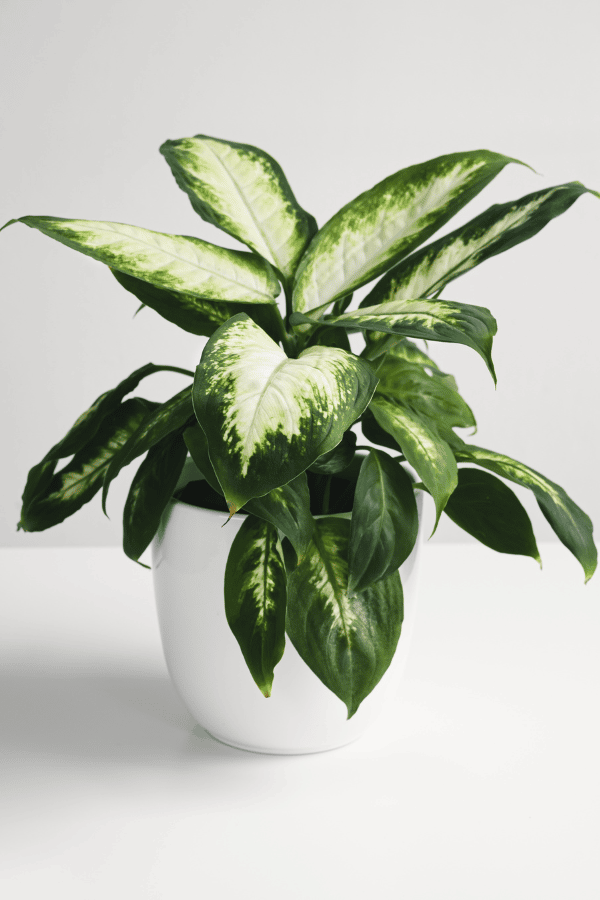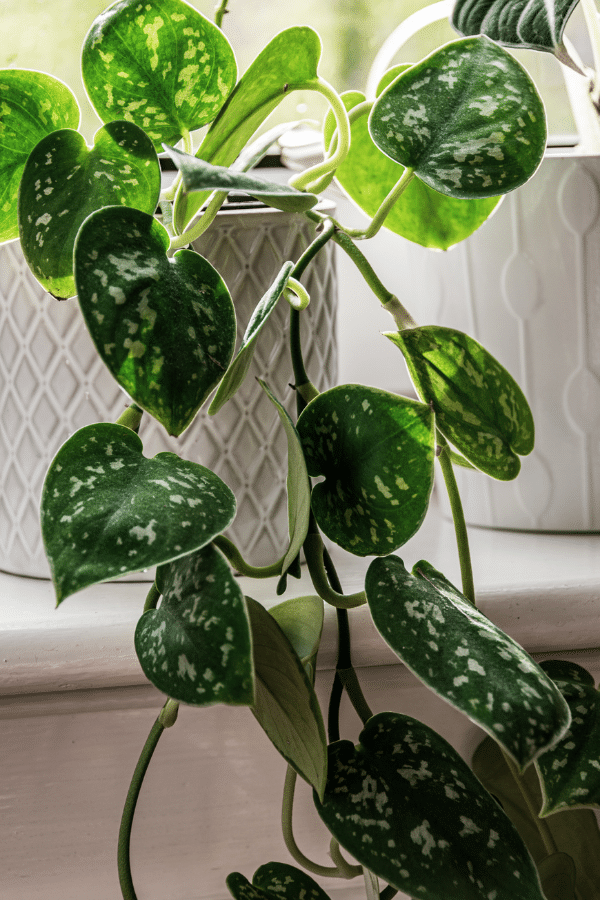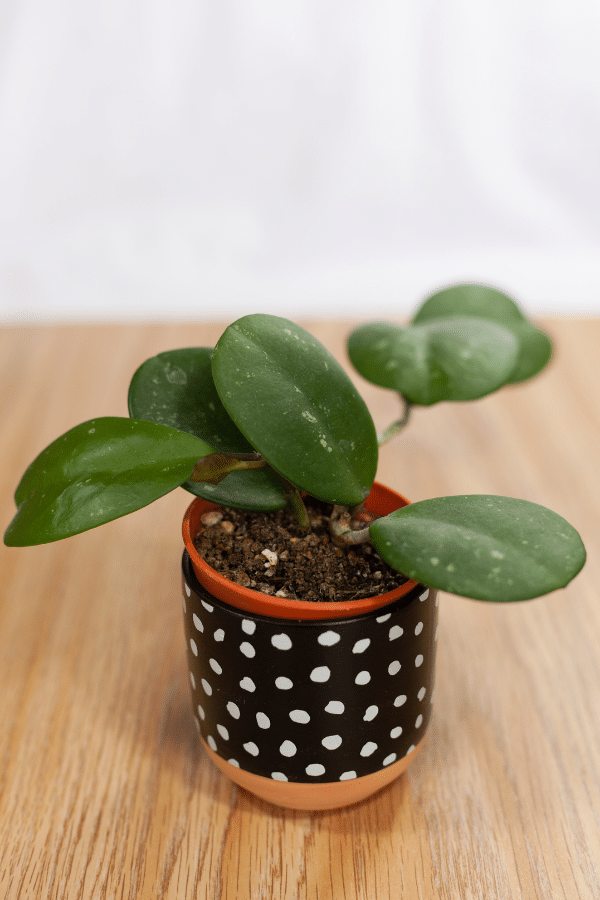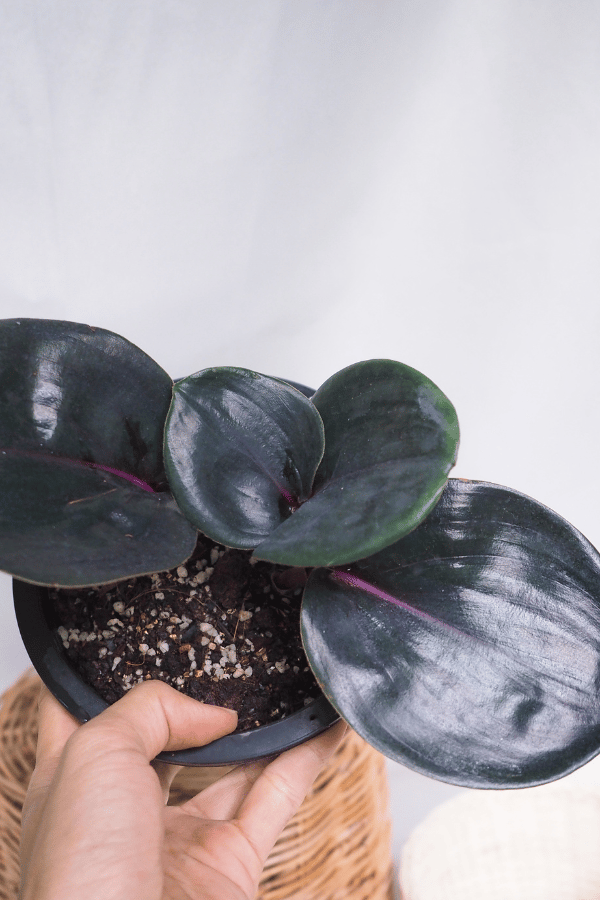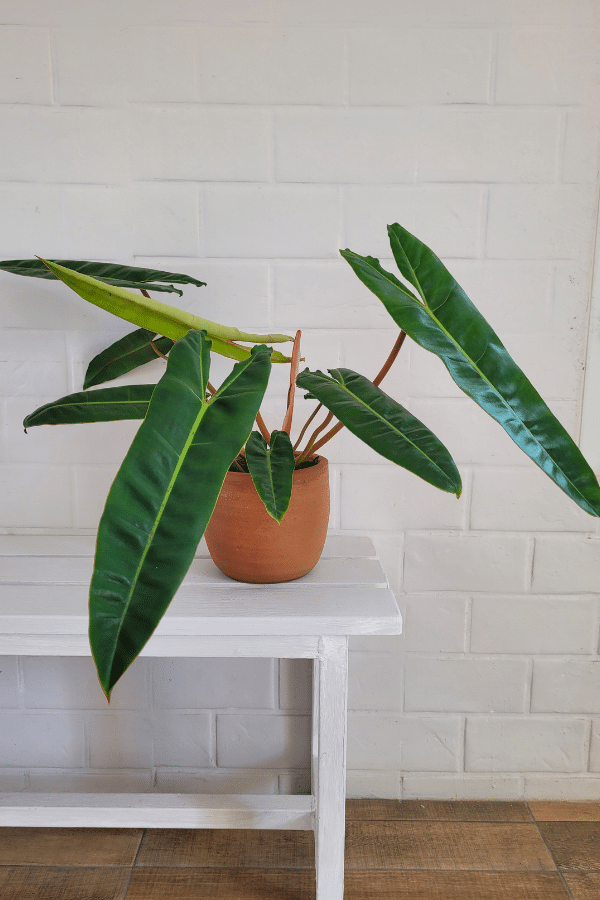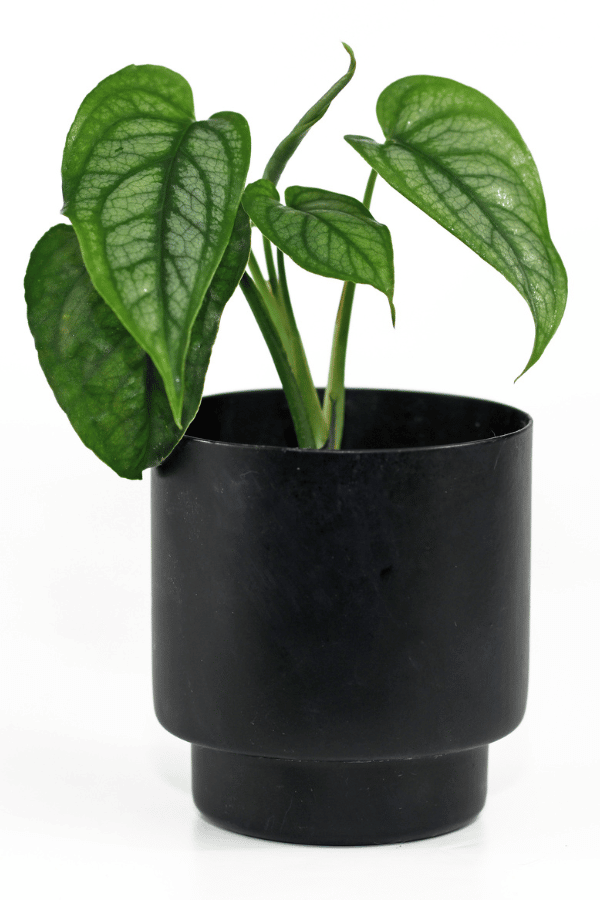Shangri La Pothos
Shangri La Pothos care is not what it seems due to the unique foliage on this plant. This plant features wrinkly leaves that when new ones unfurl, they are wrinkly, then go to “regular” leaves, and when they are mature, they go back to being wrinkly leaves. So it seems like you would have to care for it differently, however that is not the case! In this article, we’ll go over exactly how to care for Shangri La Pothos.
Scientific Name: Epipremnum Aureum ‘Shangri La’
Common Name: Sleeping Pothos, Spinach Pothos
To give Shangri La Pothos plant the best care, it requires well-draining soil, allow the top two inches of soil to dry out before watering, provide it with bright indirect sunlight, temperatures ranging from 60-80F, and average household humidity levels.
Quick Care Overview
| Common Name | Sleeping Pothos, Spinach Pothos |
| Scientific Name | Epipremnum Aureum Shangri La |
| Family | Araceae |
| Origin | Mo’orea, French Polynesia |
| Growth Rate | Slow |
| Identification | Wilty, dark green leaves, looking like spinach |
| Height | Up to 10 feet tall/in length |
| Soil | Well-draining soil |
| Water | Water when top two inches of soil are dry |
| Temperature | 60-80F |
| Sunlight | Bright indirect light |
| Toxic to Cats & Dogs | Yes |
| Toxic to Humans | Yes |
| Pests | Mealybugs, aphids, spider mites, fungus gnats |
| Diseases | Root rot |
Below we will dive deep into this Shangri La Pothos care guide.
Shangri La Pothos History
French Polynesia native Epipremnum Aureum Shangri La, is such a unique indoor plant that’s a conversation starter!
Shangri La Pothos Identification
Shangri La Pothos will have you asking yourself, “What is that plant?” when you see it in a plant store, if you do as this plant is pretty rare to find. It has dark green leaves that are curled and look like wilted spinach. It resembles a Pothos in only the way that it vines.
Shangri La Pothos Growth Facts
This slow-growing plant may only give you a handful of new leaves during the spring and summer.
How Big Does a Shangri La Pothos Get?
Shangri La Pothos may grow up to 10 feet long under the most optimal, native environmental conditions.
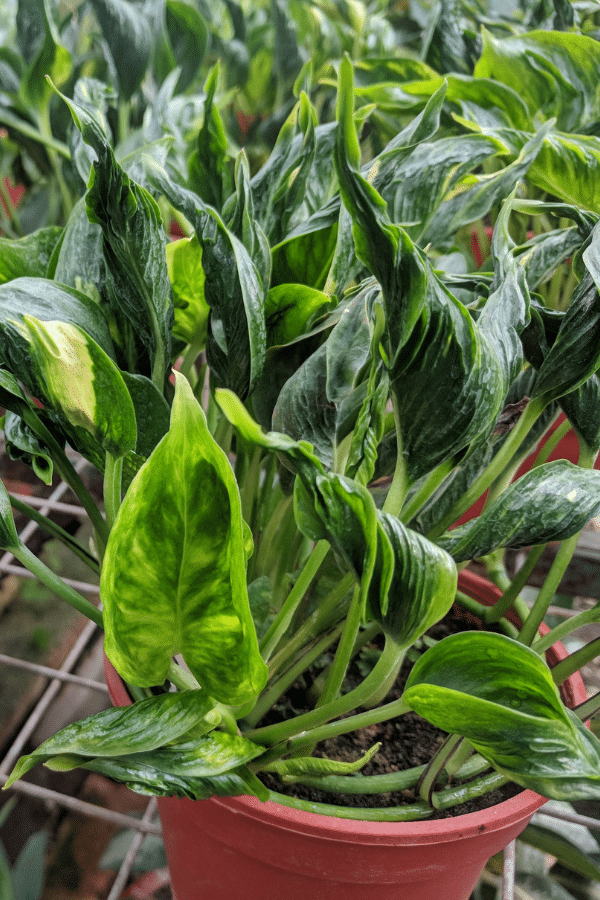
Shangri La Pothos Care
Epipremnum Aureum Shangri La leans on the rarer side of pothos plants. It’s hard to find these in local nurseries. But since it is a pothos, it is on the easier side to care for it.
Shangri La Pothos Soil
When it comes to growing Shangri La Pothos, the right soil mix is crucial for the plant’s health and growth. You want to create a well-draining soil that retains enough moisture for the plant’s roots to thrive. Here are some soil components you can use to create the ideal soil mix for your Shangri La Pothos:
- Potting Mix: A good quality potting mix is essential to any soil mix. It provides the necessary nutrients and aeration for the plant’s roots. Choose a potting mix that is specifically formulated for indoor plants.
- Perlite: Perlite is a lightweight, white volcanic rock often added to soil mixes to improve drainage. It helps to prevent soil compaction and allows air to circulate around the roots.
- Coco Coir: Coco coir is a sustainable alternative to peat moss. It is made from the fibrous husks of coconuts and is an excellent water retainer. It also provides good aeration for the roots and helps to prevent soil compaction.
- Peat Moss: Peat moss is a common ingredient in soil mixes. It helps to retain moisture and provides good aeration for the roots. However, it is not a sustainable resource, and harvesting it can be harmful to the environment.
- Regular Potting Soil: Regular potting soil can be used as a base for your soil mix. However, it is important to ensure that it is a well-draining mix suitable for indoor plants.
You can use a combination of these components to create the ideal soil mix for your Shangri La Pothos. A good ratio to start with is one part potting mix, one part perlite, and one part coco coir or peat moss. Adjust the ratio as needed to create a well-draining soil that retains enough moisture for your plant’s roots.
Remember, the right soil mix is just one part of creating the ideal growing conditions for your Shangri La Pothos. Make sure to also provide the plant with adequate light, water, and humidity to ensure its health and growth.
Shangri La Pothos Fertilizer
To keep your Shangri La Pothos healthy and thriving, you should fertilize it regularly. You can use several types of fertilizers, but liquid fertilizer is the most convenient and effective option.
Liquid fertilizer is easy to apply and quickly absorbed by the plant roots. It also provides a balanced mix of nutrients that your Shangri La Pothos needs to grow strong and lush.
When choosing a liquid fertilizer, look for one with a balanced NPK ratio, which stands for nitrogen, phosphorus, and potassium. A balanced ratio ensures that your plant gets all the essential nutrients it needs without overfeeding it.
It’s recommended that you fertilize your Shangri La Pothos once a month during the growing season, which is typically from spring to fall. During the winter months, you can reduce the frequency to once every two months.
To apply the liquid fertilizer, dilute it according to the instructions on the label and pour it into the soil around the base of the plant. Be careful not to get any on the leaves, as it can cause burning.
In addition to liquid fertilizer, you can also use slow-release fertilizer pellets or organic fertilizers like compost or worm castings. These options gradually release nutrients over time, which can benefit your plant’s long-term health.
Shangri La Pothos Watering
When it comes to watering your Shangri La Pothos, it’s important to strike a balance between keeping the soil moist and avoiding overwatering. Overwatering can lead to root rot and yellow leaves, so paying close attention to your plant’s needs is important.
To ensure your Shangri La Pothos stays healthy, you should water it when the top inch of soil feels dry to the touch. How long this takes will vary depending on factors such as the temperature and humidity in your home, so it’s important to check the soil regularly.
When watering your Shangri La Pothos, make sure to water thoroughly, allowing water to flow through the drainage holes at the bottom of the pot. Doing this will help prevent water pooling in the soil and potentially causing issues.
It’s also important to ensure your pot has adequate drainage holes to allow excess water to escape. If your pot doesn’t have drainage holes, you should repot your plant into a container that does.
Shangri La Pothos Light Requirements
To keep your Shangri La Pothos healthy and thriving, you need to understand its light requirements. This plant can tolerate a wide range of light conditions, but there are some guidelines to follow.
Low Light Conditions
Shangri La Pothos can tolerate low-light conditions but will not thrive in this environment. If you have a room with low light, make sure to place your plant near a window or under a grow light. Without enough light, your plant may become leggy and lose its variegation. If you notice your plant is not growing as well as it should, try moving it to a brighter location or using a grow light to supplement natural light.
Direct Sunlight
Direct sunlight can burn the leaves of your Shangri La Pothos, so it is best to avoid placing it in direct sunlight. If you have a window that receives direct sunlight, place your plant a few feet away from the window or use a sheer curtain to filter the light.
Bright Indirect Light
Bright indirect light is the ideal condition for your Shangri La Pothos. This type of light will help your plant maintain its variegation and promote healthy growth. Place your plant near a window that receives bright, indirect light, or use a grow light to supplement natural light.
Shangri La Pothos Temperature & Humidity
To ensure your Shangri La Pothos thrives, you need to maintain the right temperature and humidity levels. This plant is native to tropical regions and requires warm and humid conditions to grow well.
The ideal temperature range for a Shangri La Pothos is between 65°F and 85°F. Temperatures below 60°F can cause damage to the leaves, while temperatures above 90°F can lead to leaf scorching. So, keeping the plant away from drafty windows or air conditioning units that can cause temperature fluctuations is best.
Humidity is also crucial for the Shangri La Pothos. This plant prefers high humidity levels of around 60% to 70%. If the air is too dry, the leaves may start to curl or turn brown around the edges. You can use a humidifier to increase the humidity levels around the plant or place a tray of water near the plant to create a humid microclimate.
It’s important to note that too much humidity can also harm the Shangri La Pothos. High humidity levels can create a breeding ground for pests and diseases, so it’s essential to maintain a balance. Regularly check the humidity levels around the plant and adjust accordingly.
Repotting Shangri La Pothos
When it comes to repotting your Shangri La Pothos, it’s important to choose the right pot size. You want a pot that’s just slightly larger than the current one, as a pot that’s too big can lead to overwatering and root rot.
To begin, gently remove the plant from its current pot, being careful not to damage the roots. Inspect the roots and remove any that are brown or mushy. Healthy roots should be white or light brown.
Next, fill the new pot with fresh potting soil, leaving enough space for the plant. Place the plant in the new pot and backfill it with soil, gently pressing down to ensure the plant is secure.
After repotting, it’s important to water the plant thoroughly and keep it in a location with bright, indirect light. Be sure not to overwater the plant, which can lead to root rot.
If you notice any unhealthy stems, it’s best to prune them back to promote new growth. Overall, repotting your Shangri La Pothos can help promote healthy growth and keep your plant thriving.
Shangri La Pothos Maintenance & Pruning
Maintaining your Shangri La Pothos is relatively easy, as it is a low-maintenance plant that requires minimal attention. However, regular pruning is essential to keep the plant healthy and looking its best.
When it comes to pruning, focus on removing dead or yellowing leaves and any vines that have grown too long or are getting tangled. You can also trim back any stems that have become too long or leggy.
To prune your Shangri La Pothos, use sharp scissors or pruning shears to make clean cuts just above the node where the leaf or vine meets the stem. Be sure to disinfect your tools before and after pruning to prevent the spread of disease.
In addition to pruning, keeping your Shangri La Pothos clean and free of dust and debris is also important. You can wipe down the leaves with a damp cloth or give the plant a gentle shower to remove any buildup.
Shangri La Pothos Propagation
If you want to propagate your Shangri La Pothos, you can do so using stem cuttings. Doing so is a simple and effective way to create new plants and expand your collection. When propagating your plant, make sure to use clean tools and not damage the stem or leaves. Here’s how to do it:
- Choose a healthy stem: Look for a stem that is at least 4-6 inches long and has a few leaves on it. Make sure it is healthy and free from any signs of disease or damage.
- Cut the stem: Use a clean, sharp pair of scissors or pruning shears to cut the stem just below a node. A node is where a leaf meets the stem.
- Remove lower leaves: Remove the lower leaves from the stem, leaving only a few at the top.
- Place in water: Place the stem cutting in a jar or vase filled with water. Make sure the bottom of the stem is submerged in the water.
- Wait for roots to grow: Keep the jar or vase in a warm, bright location but out of direct sunlight. Change the water every few days to prevent bacteria from growing. After a few weeks, you should start to see roots growing from the bottom of the stem.
- Plant in soil: Once the roots are at least an inch long, you can plant the cutting in soil. Use a well-draining potting mix and make a hole in the soil with your finger. Gently place the stem cutting in the hole and cover it with soil.
- Water and care for the new plant: Water the new plant thoroughly and place it in a bright location but out of direct sunlight. Keep the soil moist but not waterlogged. Your new Shangri La Pothos should start to grow and thrive.
Shangri La Pothos Toxicity
Shangri La Pothos, also known as Epipremnum aureum ‘Shangri La,’ is a popular houseplant known for its beautiful, variegated leaves. While this plant is generally safe to have around, it is important to be aware of its potential toxicity, especially if you have pets or small children in your home.
Shangri La Pothos contains calcium oxalate crystals, which are small, needle-like structures that can cause mouth irritation if ingested. These crystals can cause a burning sensation in the mouth, tongue, and lips, which can be very uncomfortable for both humans and animals.
If you suspect your pet has ingested Shangri La Pothos, immediately contact your veterinarian or a poison control center. Symptoms of ingestion may include drooling, vomiting, and difficulty swallowing. In severe cases, ingesting this plant can even be fatal.
To prevent accidental ingestion, keep your Shangri La Pothos out of the reach of children and pets. If you have pets that like to chew on plants, consider keeping your Shangri La Pothos in a hanging basket or on a high shelf where they cannot reach it.
Shangri La Pothos Problems
Shangri La Pothos Leaves Turning Yellow
If you notice that your Shangri La Pothos leaves are turning yellow, it may be a sign of overwatering. Overwatering is a common issue with pothos plants, and it’s important to address it as soon as possible to prevent further damage.
Overwatering can cause the roots of your Shangri La Pothos to become waterlogged, leading to root rot. This can cause the leaves to turn yellow, wilt, and eventually fall off. To avoid overwatering, ensure the soil is dry to the touch before watering your plant again.
Another reason your Shangri La Pothos leaves may be turning yellow is the lack of sunlight. Pothos plants require bright, indirect sunlight to thrive. If your plant is not receiving enough light, it may start to show signs of stress by turning yellow. Try moving your plant to a brighter location but avoid direct sunlight as it can scorch the leaves.
If you have ruled out overwatering and lack of sunlight as the cause of your Shangri La Pothos leaves turning yellow, it may be time to check for pests. Mealybugs, spider mites, and scale insects are common pests that can infest pothos plants. These pests can cause the leaves to turn yellow and may also leave behind a sticky residue on the leaves. Check the leaves and stems of your plant for any signs of pests, and treat accordingly.
Shangri La Pothos Leaves Turning Brown
If you notice your Shangri La Pothos turning brown, it could be due to several factors. One of the most common reasons is a lack of light. Pothos plants require bright but indirect light to thrive. If your plant is not getting enough light, the leaves can turn brown and wither.
To fix this issue, you can move your plant to a brighter location. If moving it closer to a window is not possible, you can also try using artificial lights. LED grow lights can provide the right amount of light for your Shangri La Pothos without damaging the leaves.
Another reason for brown leaves could be overwatering. Pothos plants prefer slightly moist soil but can’t tolerate standing water. If you are watering your plant too frequently or not allowing the soil to dry out between watering, the roots can become waterlogged and start to rot. This can cause the leaves to turn brown and wilt.
To fix this issue, you should adjust your watering schedule. Allow the soil to dry out slightly between watering and ensure the pot has proper drainage. You can also check the roots for signs of rot and remove any damaged roots.
In some cases, brown leaves can be a sign of pest infestation or disease. Check your plant regularly for signs of pests such as spider mites or mealybugs. If you notice any pests, you can treat your plant with insecticidal soap or neem oil.
Shangri La Pothos Diseases
Pothos plants are generally easy to care for but can still fall prey to a few diseases. Here are a few things to look out for when caring for your Shangri La Pothos.
Root Rot
One of the most common issues with pothos plants is root rot. This occurs when the roots are overwatered or sit in water for too long. If you notice the leaves turning yellow or brown or the plant is wilting, root rot may be the cause. To prevent root rot, ensure your plant is in a well-draining pot with plenty of drainage holes. Avoid overwatering and make sure the soil has a chance to dry out between waterings.
Overwatering
Overwatering can lead to root rot, but it can also cause other issues with your Shangri La Pothos. If you notice the leaves are turning yellow or brown and are becoming mushy or slimy, you may be overwatering. Additionally, if you notice the soil is constantly wet, it’s a sign that you need to cut back on watering. To prevent overwatering, make sure the pot has proper drainage and only water when the soil is dry to the touch.
Shangri La Pothos Pests
As a plant enthusiast, you may have encountered pests that can damage your Shangri La Pothos. Here are some common pests that you should be aware of:
Spider Mites
These tiny pests can cause damage to your plant by sucking the sap from its leaves. You may notice webbing on your plant or yellow spots on the leaves. To get rid of spider mites, you can use neem oil or insecticidal soap. Make sure to spray both the tops and bottoms of the leaves.
Mealybugs
Mealybugs are small, white, cotton-like pests that can cause damage to your Shangri La Pothos by feeding on its sap. You may notice a sticky residue or a white, powdery substance on the leaves. To get rid of mealybugs, you can use a mixture of water and dish soap or neem oil.
Other Common Pests
Other common pests that can damage your Shangri La Pothos include scale insects, aphids, and thrips. These pests can also be controlled using neem oil or insecticidal soap.
Neem Oil
Neem oil is a natural pesticide that can be used to control pests on your Shangri La Pothos. It is safe to use and can be sprayed directly on the leaves. Neem oil works by disrupting the life cycle of pests and preventing them from reproducing.
Insecticidal Soap
Insecticidal soap is another natural pesticide that can be used to control pests on your Shangri La Pothos. It works by suffocating the pests and can be sprayed directly on the leaves. Make sure to follow the instructions on the label and avoid spraying in direct sunlight.

